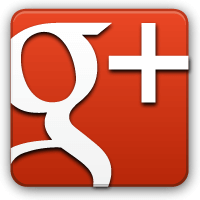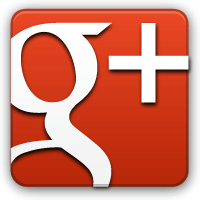Making the most of Google+
With Google+ passing its second anniversary communications experts at Pelican look at how the tool is developing, and whether you should be considering it in your communications plans.
When Google+ launched in 2011 many people questioned the usefulness of another social media platform when sites like Facebook, Twitter and LinkedIn were already so well established and doing a good job.
By January 2013 Google+ had overtaken Twitter as the second largest social networking site. It currently has around 500 million active users so it’s fair to say it’s well-established.
So how can you make the most of this platform as part of your social media strategy?
Who uses it?
At the moment, it is mainly FMCG organisations with well-thought out social media strategies that are using Google+ successfully. There is less use of Google+ in B2B communications.
A good example is Cadbury, as they were one of the first to use the site for a major product launch last year – http://mashable.com/2012/01/11/cadbury-uk-uses-google-for-product-launch/. The Cadbury Dairy Milk Facebook page had just under seven million likes last time we checked. The Cadbury ‘Joyville’ Google+ page has just over 3 million followers.
What do people use it for?
Although Google claims high figures for the proportion of Google+ users that are active, only 2% of social sharing happens on Google+, according to Marketing Land.
To go back to our Cadbury example, the Joyville and Dairy Milk pages are being updated most days, creatively linking products to the day’s news. However, information is being shared more on Facebook. For example, a post about Dairy Milk Strawberries & Creme was liked by 1,789 people on Facebook and ‘+1d’ by 329 people on Google+.
It appears that Google+ is mainly being used as an outlet for content from other platforms such as Facebook and Twitter, rather than a lead platform. For example, organisations are posting their latest blogs on Google+ as yet another way of driving traffic to their websites.
Should I be using Google+?
Google is well known for keeping very quiet when it comes to releasing details about how it works out who should come top of a search. Yet many in the industry are finding that a little interaction on Google+ makes a big difference to search rankings.
Our initial recommendation is to at least make sure that your organisation’s page is set up and linked to Google+ Local, something we can help with if you are not sure what to do. This is one of the simplest things you can do to boost your performance on the Google search engine.
Beyond that, it is worth looking at your audience – the people that can make a difference to your business. Are they on Google+? If they are, how much are they using it? This is often the first part of the planning process when we start mapping out a client’s social media strategy.
Google+ has some impressive numbers, but recommendations of how to use it successfully vary from one client to another. For guidance on how Pelican PR can help you with Google+ and your social media strategy get in touch through the website or call Sarah on 01457 820 807.
Features you should know about
Circles are used to organise contacts into groups for sharing information. The visibility of these users depends on how they have set their privacy settings. You cannot be ‘added’ to a Circle – only invited. It is up to you to then join a Circle. Users can vary the level of detail they see from a particular Circle once they have joined.
Streams This is the area in the middle of the screen where a user sees their contacts’ updates. If you are familiar with Facebook, you can liken it to the Facebook news feed. You can filter your stream to only see posts from specific Circles.
Games There are none. As of June 2013, the few games that did exist have been removed.
Ripples For information which is shared publicly, this shows how information is being shared by showing data such as top contributors, chain length statistics and influential people in a chain.
Hashtags The ‘#’ symbol is used to highlight subjects in posts, as with Twitter, making it easier to find information on topics of interest. The slight difference is that Google+ will add its own hashtags if it thinks your post is relevant to a certain subject. Hashtags in grey are those used by a post’s author; hashtags in blue are added by Google based on the content of the post.
Hangouts These are video chats accessed by sharing a URL; with up to 10 people taking part in a hangout at the same time. Users must have the Hangout ‘plugin’ installed to use this feature. The On Air feature broadcasts the conversation in a Hangout on Google+ and YouTube.
Google+ Local This replaced the old Google Places in 2012 and integrates with Google+ so that users can post photos and reviews of locations directly to its page on the service.
Google+ Pages As with Facebook, Google+ allows organisations to get up their own pages to communicate with ‘fans’. It is worth noting that organisations can invite people to follow them.
Pelican Communications are specialists in the environment, food and drink, outdoor and leisure and packaging sectors and offer a range of services such as media relations, brand management, event management and people development. Contact us for marketing and communications expertise.
